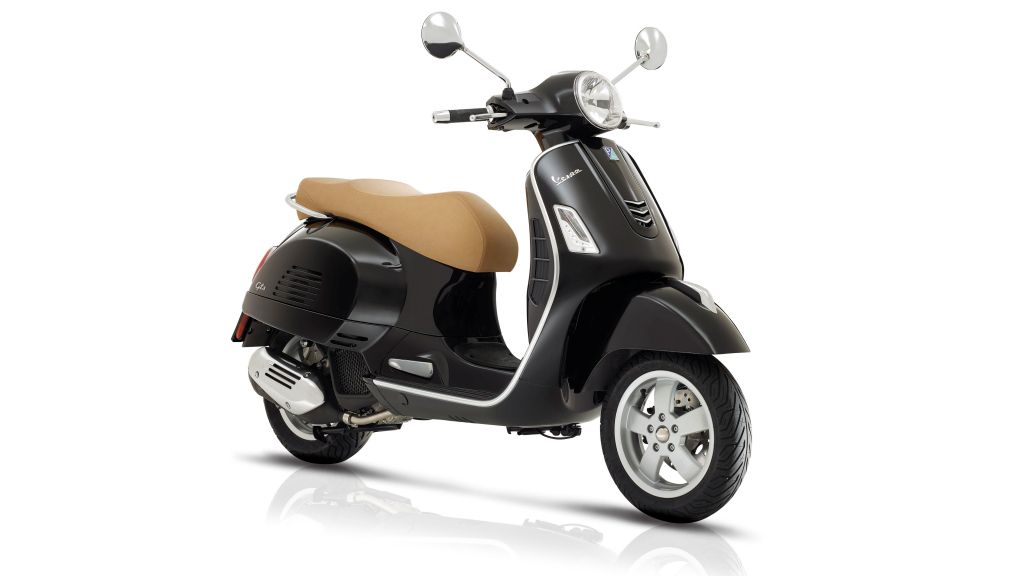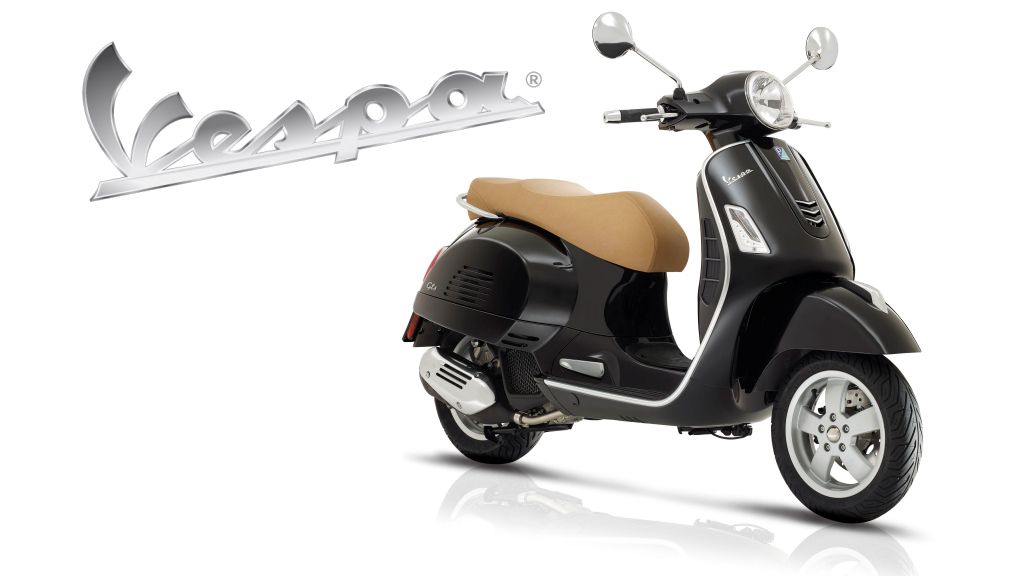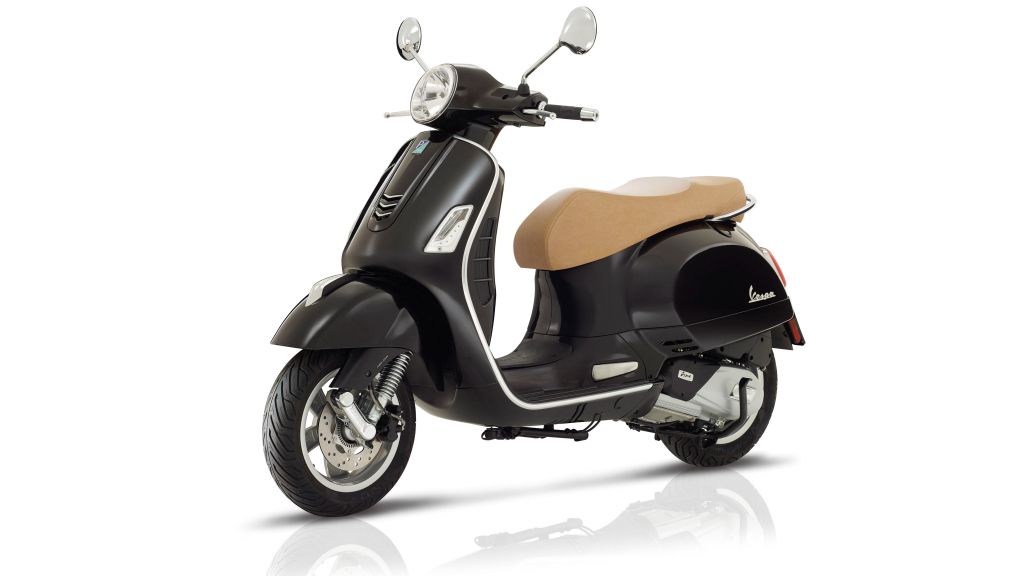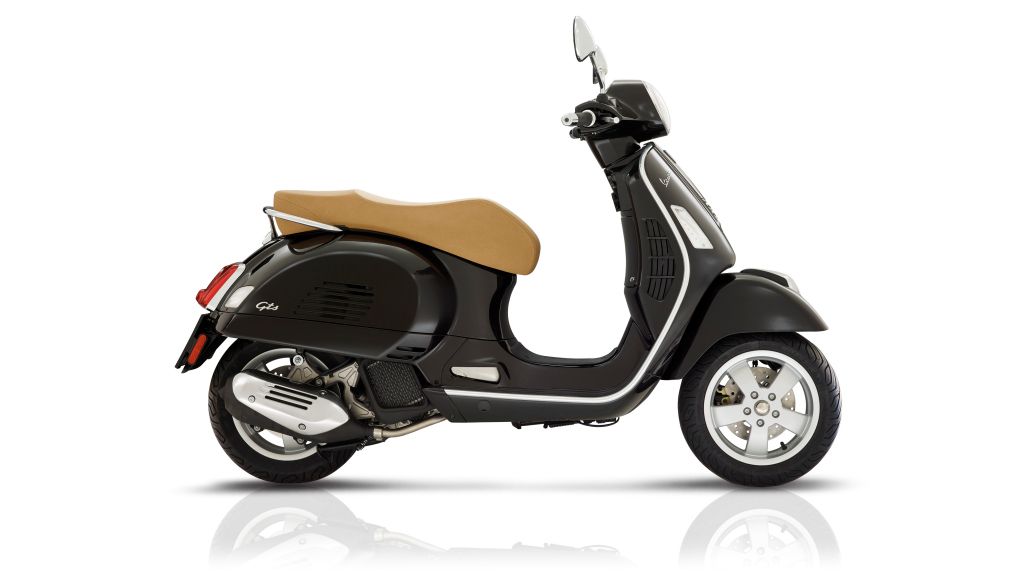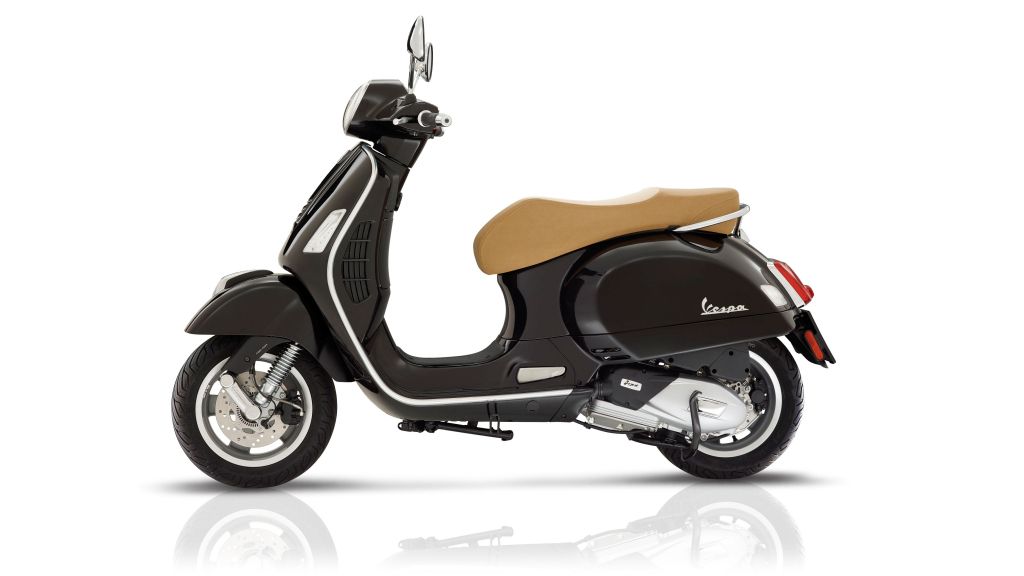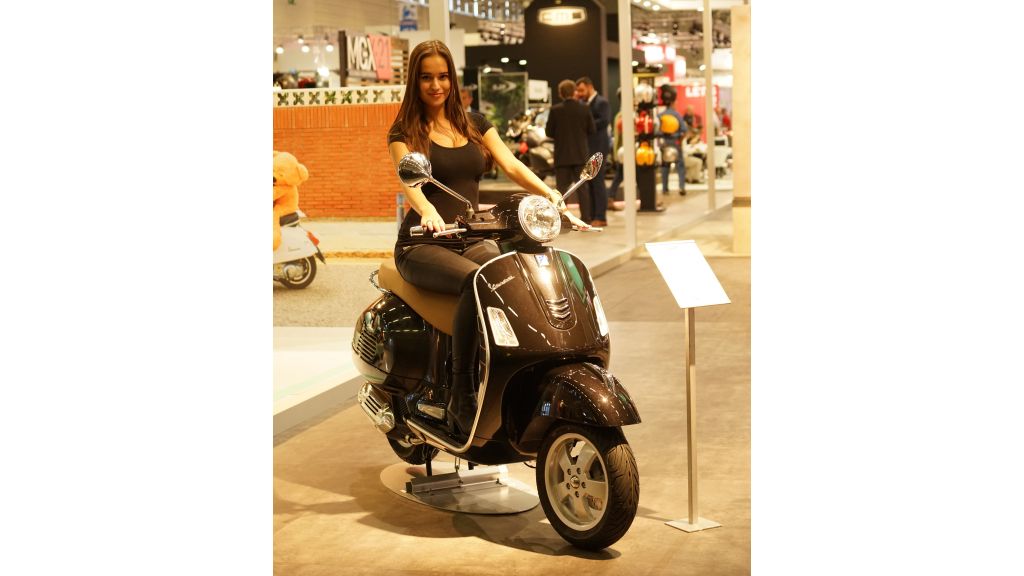Vespa->ke2257, under Piaggio->ke2268 Group, has redesigned and repowered its flagship Gran Tourismo Sport scooter->ke2256 for the 2017 model year. The GTS->ke2259 125 and 150 get an entirely new engine in order to meet Euro 4 emissions standards and keep fuel consumption as low as possible in response to popular demand. Unveiled at 2016 INTERMOT, Piaggio revealed the GTS with all the vintage lines that we love and the iGet engine that new emission standards demand.
Continue reading for my review of the Vespa GTS 125 and 150 iGet.
2017 Vespa GTS 125 / 150 IGet
- Make: Array
- Model: 2017 Vespa GTS 125 / 150 IGet
- Engine/Motor: inline-1
- [do not use] Vehicle Model: Array
Design
No matter how modern Vespa gets “under the hood,” it always retains shades of yesteryear with design characteristics that hail back as far as the middle of the last century. Who can blame them? The Italian “Wasp” helped to define the look and culture surrounding scooter transportation, and one simply cannot argue with success.
Classic looks abound with the typical front legguard/fairing and small headlight housing on the bars atop the chrome-trimmed tie on the fairing. An almost-full stepthrough leaves room for easy mounting/dismounting, and although there is a short channel that interrupts the deck, at least it comes with a generous flat for some between-feet storage.
A two-up bench seat covers the storage compartment that can carry a couple of three-quarter helmets or equivalent. The leg shield also boasts a bit of storage space with room for minor bits and bobs such as your phone and other “possibles,” plus a bag hook offers a convenient spot to hang a sack. Over the rear wheel we have the classic wasp-tail fenders that finish the old-school looks. A low-profile tail lamp keeps the rear end clean, and the recessed turn signals means the only thing projecting from the ride are the rear-view mirror standoffs.
Not so obvious are the electronic gadgets that mark this as a truly modern ride. First up is the USB port that allows you to use your smartphone to interface with the bike and record your trip information, so your phone will remember where you parked, a nice feature for those of us with the attention span of a goldfish. On top of that, you get a remote that can unlock the under-seat storage and make the turn signals flash, you know, in case the map on your phone isn't enough.
Chassis
Welded sheet-metal panels form a monocoque body that is self-supporting sans frame. This leaves us with a stiff but light construction, but as with any uni-body, it makes repairing crash damage more involved than with sheet metal-over-frame rides. That said, Vespa took steps to help riders avoid collisions in the first place with a two-channel ABS feature that works with the hydraulic calipers and 220 mm front-and-rear brake discs. Cast rims mount the 12-inch hoops with a 120/70 up front and a 130/70 in back. The front wheel rides with a leading-link suspension system that uses a coil-over shock for support and damping duties, and a pair of shocks hidden in back come with a four-way preload adjuster that allows you to dial in for changing cargo/passenger loads. At 53.9-inches long, the wheelbase is appropriately compact and typical of the small-scooter genre.
Drivetrain
The shining star of this show is definitely the next-generation “i-get” engine that brings the sub-200 cc line into Euro 4 compliance. There are a number of features that factor into the equation, so let's get started.
First off, a liquid-cooling system keep internal temperatures more stable than is possible with an air-cooled engine, even a forced-air one. The factory waged unrestricted warfare on power-sapping friction by replacing all plain bushings with proper bearings, and it even shifted the cylinder axis to reduce losses due to piston-to-cylinder contact. Lash (clearance) between the internal components were reduced as well to combat mechanical thrashing noise from the mill, and all moving parts come balanced to reduce friction as well.
A four-valve head opens up the combustion chamber for maximum, naturally-aspirated volumetric efficiency and exhaust-gas scavenging, a move that keeps the exhaust pulse free of excess hydrocarbons and the incoming air-fuel charge clean. Electronic fuel injection feeds the mill with precisely metered doses determined by the S&S engine management system that also manages the Regulator Inverter Start & Stop feature. The RISS automatically stops the engine after 3 seconds or thereabouts when the scooter comes to a complete stop, then restarts it as soon as the throttle moves. Not only does this reduce the amount of waste heat being generated, but it naturally improves mileage in urban environs. Even the starter itself is something of a marvel. Rather than using an externally mounted electric motor with a noisy gear-reduction unit, the brushless starter is mounted directly on the crankshaft for near-silent operation.
As the names suggest, the GTS comes with two slightly different mills. The smaller “125” measures out at 124.7 cc, and it cranks out 12 horsepower at 8,250 rpm and 8.1 pound-feet at 6,750 rpm. A bit bigger, the “150” actually has a 155.2 cc displacement with 14.7 horsepower at 8,250 rpm and 10.3 pound-feet of torque at 6,500 rpm. As always, this power gets funneled through a centrifugal clutch and Continuously-Variable Transmission that provides the trademark Twist-and-Go operation for effortless control.
Competitor
No matter what you think of riding scooters, surely you can appreciate the timeless panache Vespa brings to the table with so many of its products, so I went shopping for something with a similar look and settled on the Havana Classic 125 from Lance Motorsports. As far as looks go, both of these scoots are very sweet indeed with retro flavor added liberally thereunto.
I would be remiss if I didn't point out that while Lance does a good job of incorporating the requisite design characteristics, Vespa has its own roots to draw upon for a genuine retro appeal. The Havana suffers a bit when it comes to storage space with only a tiny void under the seat versus the multiple storage areas offered on the GTS, but it redeems itself somewhat with a full step-through complete with a flat deck that is infinitely more useful for between-the-feet cargo.
Lance doesn't go quite as far as Vespa to reduce mechanical losses due to friction, but it does employ Ceramic Cylinder-Coating technology for low piston-to-cylinder friction within its cast-iron sleeve. The Lance cranks out 8.38 ponies and 6.14 pounds of grunt, a shade or two shy of the 12 ponies and 8 pounds out of the Vespa, but seriously folks, it's a scooter, and within this displacement range you can't expect, nor do you need, much in the way of performance. At this time, prices are still TBA on the Vespa rides, but if history is any indication, the $1,999 sticker on the Lance is liable to be quite a bit thriftier than the typically proud Vespa product.
He Said
“As always, I'm not exactly chomping at the bit to rush out and buy one of these, but to be fair I am as impressed with the timeless looks. Vespa created this niche, and it makes sense that they would still be the best at carrying retro into the now. Credit where it's due, the efforts to increase power and decrease emissions makes this more than just a rehashed antique, and it shows Vespa's commitment to quality.”
She Said
My wife and fellow writer, Allyn Hinton, says, "I can't believe my husband looked at a scooter. Bless his heart. Though to be fair, he does give scooters the low-wave just because they're out there, same as we are. The Vespa GTS will, no doubt be a lot pricier than the rebranded-SYM Lance, but the fit-and-finish and technology in the Vespa warrant a higher price tag."
Specifications
|
ENGINE: |
|
|
Type: |
Single cylinder, 4-stroke Piaggio i-get with “Start & Stop” system |
|
Displacement: |
125: 124.7 cc, 150: 155.2 cc |
|
Bore x Stroke: |
125: 52 mm / 58.7 mm, 150: 58 mm / 58.7 mm |
|
Max Power at crankshaft: |
125: 9 kW / 8250 rpm, 150:11 kW / 8250 rpm |
|
Max torque: |
125: 11.1 Nm / 6750 rpm, 150: 14 Nm / 6500 rpm |
|
Fuel system: |
Electronic injection |
|
Ignition: |
Electronic with variable advance |
|
Cooling system: |
Liquid |
|
Lubrication: |
Wet sump |
|
Gearbox: |
Twist-and-go CVT with torque server |
|
Clutch: |
Automatic centrifugal dry clutch |
|
VEHICLE: |
|
|
Bearing structure: |
Sheet metal with welded reinforcements |
|
Front suspension: |
Single arm suspension with coil spring and hydraulic shock absorber |
|
Rear suspension: |
Double hydraulic shock absorbers with adjustable preload with 4 settings |
|
Front Brake: |
Hydraulically operated 220 mm stainless steel disc |
|
Rear brake: |
Hydraulically operated 220 mm stainless steel disc, 2-channel ABS system |
|
Front tyre: |
Tubeless 120/70 - 12" |
|
Rear tyre: |
Tubeless 130/70 - 12" |
|
DIMENSIONS: |
|
|
Length/Width: |
1930/755 mm |
|
Wheelbase : |
1370 mm |
|
Saddle height: |
790 mm |
|
Fuel tank capacity: |
7 litres |
|
Emissions compliance: |
Euro 4 |


